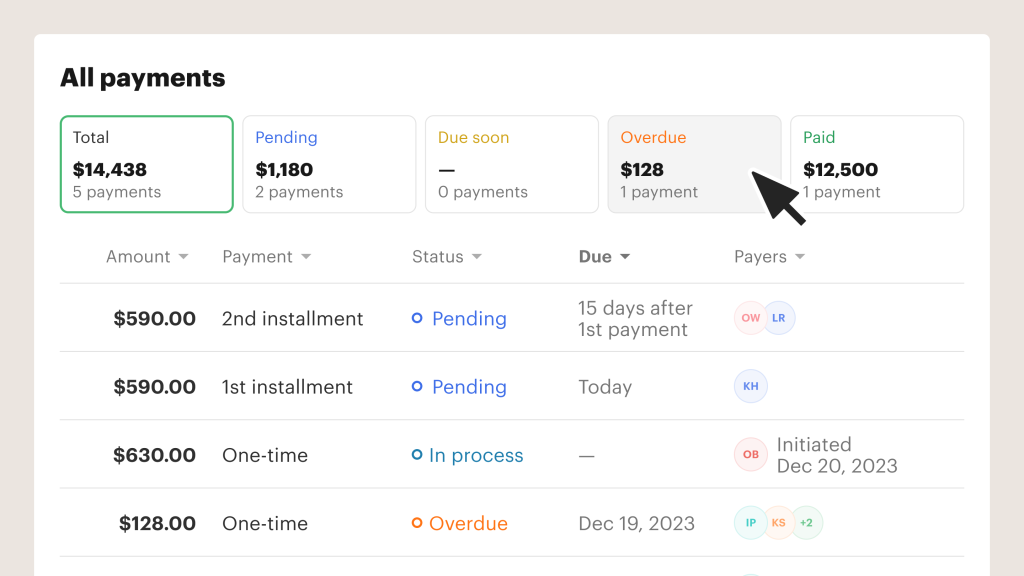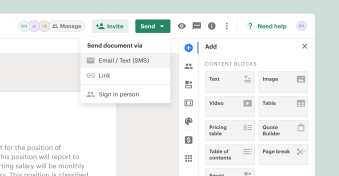The most critical aspect of completing a sale is to actually get the payment done and truly mark the entire deal as “complete.”
Despite most companies being able to get the handshake and close out the deal, payments normally take much longer, collecting them is a pain, and it’s a pain to track the status of every transaction.
Meet our new Payments App
Our new Payments App allows customers to streamline their workflow by connecting their agreements, quotes, and contracts with payments.
Finance and Ops teams can monitor and follow up on outstanding requests, send nudges to customers and have a bird’s eye view of all their payments and documents, all in one place.
This serves as a dedicated “Home” for all payment requests associated with PandaDoc documents.
The disconnect between Contracts, Agreements and Payments
Businesses are sending out contracts and quotes for signing on a regular basis, but the common pain point post-signature is that the experience for their end-customers when it comes to making payments is very broken.
At times, this is done with a separate link to a random billing software or ERP, or it requires back and forth mailing to check if the document was signed and then if it is time to send out the payment link. There are scenarios where the customer has paid, but that does not reflect yet on the back-end, which leaves the deal closure in limbo.
Over and above all this, the real burden starts during month-end closing for the innocent Finance and Accounting teams reconciling payment records, as they go to war with various tools and systems, matching payments to contracts to try and make sense of the mess.
Then, a new awkward problem begins of creating a list of customers to write to who have missed or delayed payments, and asking the relevant teams to write back to them to close it all out.
PandaDoc Payments to your rescue
PandaDoc’s new Payments app allows a range of new capabilities to simplify your sales and finance work, while keeping it all neatly organized in one intuitive dashboard.
The Payments app showcases all your payments, including showing the documents each payment is connected to, broken down by stages like Pending, Due soon, Overdue, Failed etc.
You also have the ability to track them by sorting it via payment type, document, status and owner so you have complete control over all your payments.

Easy and flexible Payments within your documents
PandaDoc lets you integrate a range of payment gateways – Stripe, Square, Authorize.net, QuickBooks payments or PayPal to collect payments from your customers.
You can arrange for subscription payments, one-time payments or even for payments to be done in two installments, and also provide a range from 15 to 90 days for your installments to be broken down into.
Simple ways to nudge customers with delayed payments
With the Payments dashboard, you can simply click any document or payment and instantly send a reminder to the customer for them to pay and close it out – no more awkward emails or conversations.
You have the additional strength of scheduling an automated reminder, or just sending a manual one, depending on your need.

Connect in seconds, and supercharge your payments
That’s it. The new Payments app is available to all our customers to use and setting up an integration to a payment gateway, like Square for example, is super simple.
Once you get set up with a payment gateway, you can go ahead and add a payment to your document, template or form, including linking it to our Quote builder or Pricing table.
So, go ahead and start making payments a breeze for your customers and also have complete financial control over all your payments by tracking them on our new Payments app dashboard.
New to PandaDoc? Request a demo to see how PandaDoc can help you close more deals.


